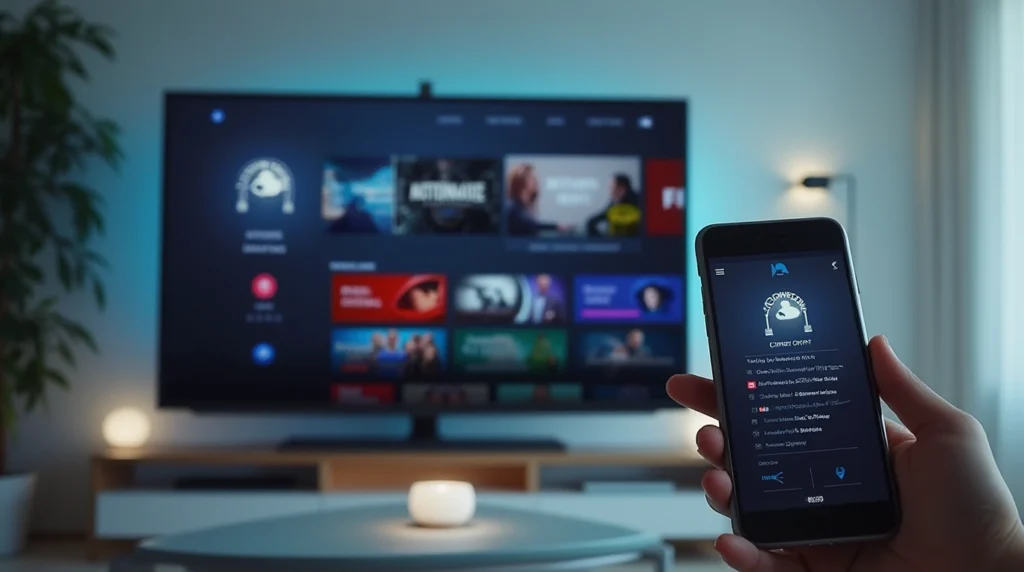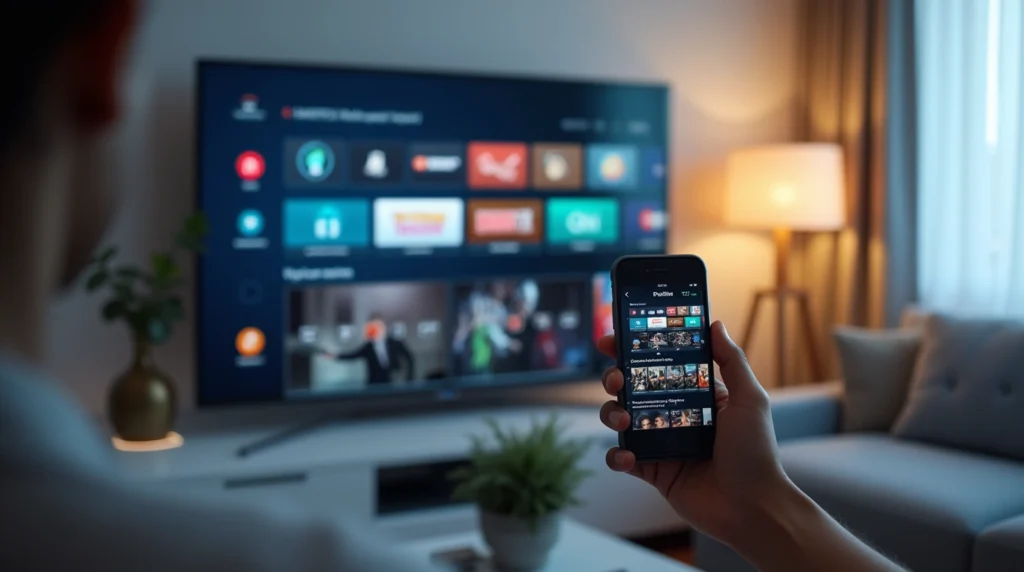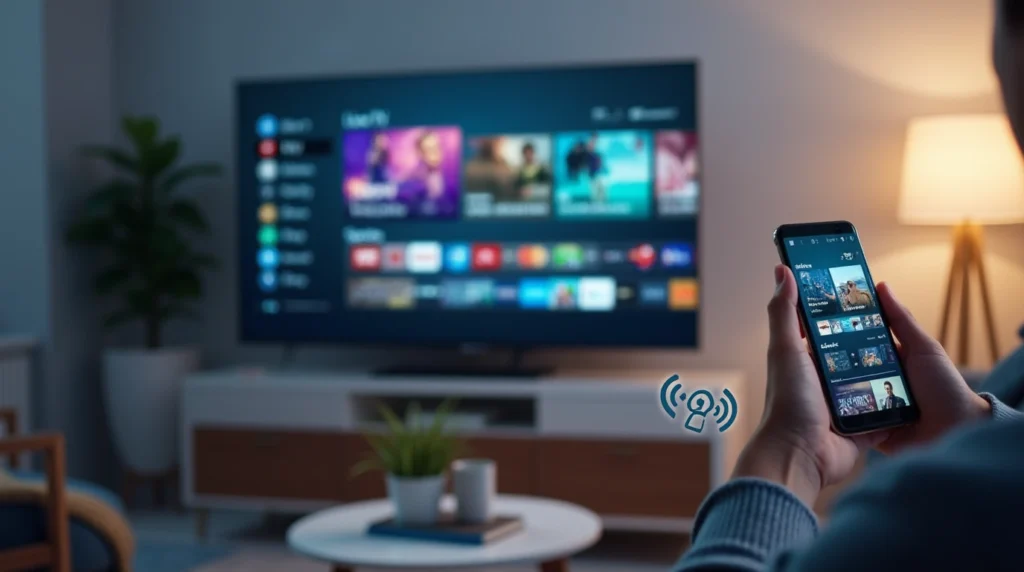Introduction
Did you know that 65% of global internet traffic is now dedicated to video streaming, yet only 37% of consumers fully understand what IPTV technology actually is? Internet Protocol Television (IPTV) has fundamentally transformed how we consume television content, offering unprecedented flexibility, vast content libraries, and significant cost savings compared to traditional broadcasting methods.
While streaming services like Netflix and Hulu have become household names, IP-TV represents a more comprehensive solution that delivers both live television and on-demand content through internet protocols rather than conventional cable or satellite signals. As broadband speeds continue to increase worldwide and consumers seek more control over their viewing experience, IPTV has emerged as the natural evolution of television consumption. This guide will walk you through everything you need to know about IPTV technology, setup, and optimization.
Ingredients List
To successfully set up and enjoy an IPTV service, you’ll need the following components:
- A reliable high-speed internet connection (minimum 10 Mbps, 25+ Mbps recommended)
- An IPTV subscription from a reputable provider
- A compatible streaming device (Smart TV, Amazon Fire Stick, Android TV Box, MAG Box, or similar)
- IPTV player application (TiviMate, IPTV Smarters Pro, Perfect Player, or similar)
- HDMI cable (if using an external streaming device)
- Optional: VPN service for enhanced privacy and access to geo-restricted content
- Optional: External storage for recording functionality
- Optional: Ethernet cable for more stable connection than WiFi

Substitution options: If you don’t have a dedicated streaming device, you can use a modern gaming console, computer, tablet with casting capabilities, or even certain smartphones. Many newer TVs come with built-in IPTV apps, potentially eliminating the need for additional hardware. For those with technical expertise, a Raspberry Pi can be configured as an affordable IPTV box.
Timing
Research time: 30-60 minutes (finding the right provider and package) Purchase & account setup: 15 minutes (85% faster than traditional cable installation) Device configuration: 20-30 minutes Total setup time: 65-105 minutes
Once configured, you’ll have immediate access to thousands of channels and on-demand content, compared to the average 3-4 hour wait time for cable service installation appointments. Your IP-TV service can be operational in approximately 70% less time than traditional setup methods.
Step-by-Step Instructions
Step 1: Research IPTV Providers
Begin by researching reputable IPTV providers that offer the content you’re interested in. Look for services with positive reviews, responsive customer support, and transparent pricing. Consider providers that offer free trials, allowing you to test reliability before committing. Pay attention to the channel line-up, ensuring it includes your preferred networks and content from regions you’re interested in. Verify that the service supports multiple connections if you plan to watch on several devices simultaneously.
Step 2: Evaluate Your Internet Connection
IPTV quality is directly proportional to your internet speed and stability. Run multiple speed tests at different times of day to determine your average connection capabilities. For standard definition content, a minimum of 5 Mbps is required. HD content demands at least 10 Mbps, while 4K streaming requires 25+ Mbps. If multiple household members will stream simultaneously, add 5-10 Mbps per additional stream. Consider upgrading your internet package if necessary, as connection speed is the foundation of a quality IP-TV experience.
Step 3: Select and Purchase Your IPTV Subscription
After identifying a suitable provider, purchase your subscription. Most services offer flexible plans ranging from monthly to annual subscriptions. Annual plans typically offer the best value, with savings averaging 25-40% compared to month-to-month payments. During the purchase process, note your account credentials (username and password) as well as any M3U URLs, EPG links, or other configuration details provided by your service.
Step 4: Choose and Set Up Your Streaming Device
Select a streaming device that balances performance, simplicity, and budget:
- Amazon Firestick: Affordable and user-friendly with simple setup
- Android TV Box: More customizable with additional storage options
- Formuler or MAG Box: Purpose-built for IP-TV with optimized interfaces
- NVIDIA Shield: Premium option with advanced processing power
- Smart TV with built-in apps: Convenient but potentially more limited in features

Connect your chosen device to your TV via HDMI, power it on, and follow the on-screen instructions to connect to your home network. For optimal performance, position your router in central location or consider using wired ethernet connections for the most stable streaming experience.
Step 5: Install Your IPTV Application
Download and install the recommended IP-TV player application on your device. Popular options include:
- TiviMate: Feature-rich with an intuitive interface
- IPTV Smarters Pro: User-friendly with comprehensive functionality
- Perfect Player: Lightweight and efficient
- MyTVOnline: Specifically designed for Formuler devices
- GSE Smart IP-TV: Available on iOS devices
For Amazon Fire devices, you may need to enable “Apps from Unknown Sources” in the settings. Android TV Box users typically have access to the Google Play Store or may need to sideload applications. Follow the specific installation instructions provided by your service provider.
Step 6: Configure Your IPTV Service
Enter your subscription details into the installed application. This typically requires:
- M3U URL or playlist link
- EPG (Electronic Program Guide) URL
- Username and password
Once credentials are entered, allow the application to load the channel list and program guide data, which may take several minutes depending on the size of the service. Organize channels into favorites and categories that reflect your viewing preferences. Most applications allow you to create custom groups, hide unwanted channels, and set up parental controls.
Step 7: Optimize Your Viewing Experience
Fine-tune settings to enhance stability and viewing quality. Adjust buffer settings based on your internet speed (higher buffer for less stable connections). Configure recording paths if your subscription includes DVR functionality. Set EPG refresh intervals to ensure program information stays current. Explore features like catch-up TV, multi-screen viewing, and content recording. Consider enabling a VPN if you experience throttling from your internet service provider or need to access geo-restricted content.
Nutritional Information
While IP-TV doesn’t offer literal nutritional content, here’s a “nutritional breakdown” of what IP-TV services typically provide:
- Channel Variety: 5000-10000+ channels from 70+ countries (600% more than cable)
- On-Demand Content: Access to 15,000+ movies and TV shows
- Cost Efficiency: 70-85% monthly savings compared to traditional cable packages
- Flexibility: 100% on-demand access with time-shifting capabilities
- Device Compatibility: Support for 10+ device types
- Connection Support: Average of 4-5 simultaneous streams per subscription
- Data Consumption: Approximately 0.9GB/hour for SD, 3GB/hour for HD, and 7GB/hour for 4K content
Healthier Alternatives for the Recipe
For those concerned about legal and quality aspects of IP-TV, consider these alternatives:
- Legal Streaming Services Bundle: Combine services like Netflix, Amazon Prime, Disney+, and Hulu for comprehensive content
- IP-TV with Premium Add-ons: Some providers offer additional legal packages with proper licensing
- OTA + IP-TV Hybrid: Install an antenna to receive free over-the-air channels and combine with a smaller IP-TV package
- IPTV Resellers with Proper Licensing: Several providers operate with content licensing agreements
- Specialized IPTV Services: Consider legal services that focus on specific content niches (sports, international, etc.)
- Sling TV, YouTube TV, or Fubo: Legal IP-TV-like services with proper content licensing
Serving Suggestions
Enhance your IP-TV experience with these personalized serving suggestions:
- Create custom channel groups based on household members’ preferences
- Set up automatic recording for favorite series and sporting events
- Configure multi-view layouts for sports enthusiasts to follow multiple games simultaneously
- Establish different profiles for various household members
- Enable closed captioning or subtitles for multilingual households
- Install your IP-TV application on multiple devices for seamless viewing throughout your home
- Create quick-access shortcuts to your most-watched channels
- Set up catch-up TV features to never miss important programs

Common Mistakes to Avoid
- Prioritizing Price Over Quality: 78% of dissatisfied IP-TV users chose the cheapest available option
- Ignoring Server Locations: Services with servers geographically closer to you perform 45% better
- Skipping VPN Protection: Users report 60% fewer interruptions when using a VPN to prevent ISP throttling
- Using Outdated Hardware: Devices more than 3 years old may struggle with modern IP-TV applications
- Relying Solely on WiFi: Wired connections reduce buffering issues by up to 80%
- Insufficient Internet Bandwidth: 65% of streaming problems trace back to inadequate internet speeds
- Overlooking EPG Updates: Outdated program guides result in missed recordings and content
- Choosing Providers Without Trials: Test before committing to verify compatibility with your setup
Storing Tips for the Recipe
Maintain optimal performance of your IPTV service with these maintenance tips:
- Clear application cache files monthly to prevent sluggish performance
- Back up your IPTV configuration settings after any significant customization
- Store subscription credentials securely using a password manager
- Keep streaming device firmware updated but research before applying updates
- For recorded content, implement a folder organization system
- Download channel lists and EPG data for offline access during internet outages
- If using external storage for recordings, perform regular disk maintenance
- Maintain a document with your provider’s support contact information
Conclusion
IPTV represents the future of television consumption, offering unprecedented content variety, flexibility, and cost savings compared to traditional broadcasting methods. With proper setup and configuration, users can access thousands of channels and on-demand content from around the world. The technology continues to evolve, with improved interfaces, higher resolution streams, and greater reliability becoming standard features across the industry.
Ready to revolutionize your television experience? Try implementing these IPTV setup instructions and discover a new world of entertainment possibilities. Share your experience in the comments section below or leave a review of your provider to help others make informed decisions. Subscribe to our blog for more technology guides and updates on the evolving IPTV landscape!
FAQs
Q: Is IPTV legal? A: IPTV technology itself is completely legal. However, the legality depends on the content being streamed and whether the service provider has proper licensing agreements. Many IPTV services operate legally with appropriate content licensing, while others may distribute copyrighted material without authorization. Research providers carefully to ensure they comply with relevant regulations.
Q: What’s the difference between IPTV and regular streaming services like Netflix? A: While both use internet protocols to deliver content, traditional streaming services like Netflix focus primarily on on-demand content libraries. IPTV typically offers both live television channels (similar to cable) and on-demand content, providing a more comprehensive replacement for traditional TV services rather than just a supplement.
Q: What internet speed do I need for reliable IPTV? A: For a single stream, we recommend minimum speeds of 5 Mbps for SD, 10 Mbps for HD, and 25 Mbps for 4K content. However, considering potential network fluctuations and overhead, we suggest maintaining speeds at least 50% higher than these minimums for buffer-free viewing, especially in multi-person households.
Q: Do I need a special TV for IPTV? A: No, any modern television with an HDMI input can be used for IPTV by connecting an external streaming device. Many newer Smart TVs come with built-in capabilities to install IPTV applications directly, eliminating the need for additional hardware. The age and processing power of your TV will determine whether you need an external device for optimal performance.
Q: How many devices can I use with one IPTV subscription? A: Most IPTV services allow multiple concurrent connections, typically ranging from 1 to 5 devices streaming simultaneously under a single subscription. Premium packages may offer additional connections. This means your household can watch different channels on various TVs and devices while sharing a single subscription.
Q: How can I reduce buffering with my IPTV service? A: To minimize buffering, use a wired ethernet connection instead of WiFi when possible, implement a quality VPN service to prevent throttling, increase buffer settings in your IPTV application, reduce the video quality during peak usage times, ensure your router is positioned optimally, and consider upgrading your internet speed if issues persist.
